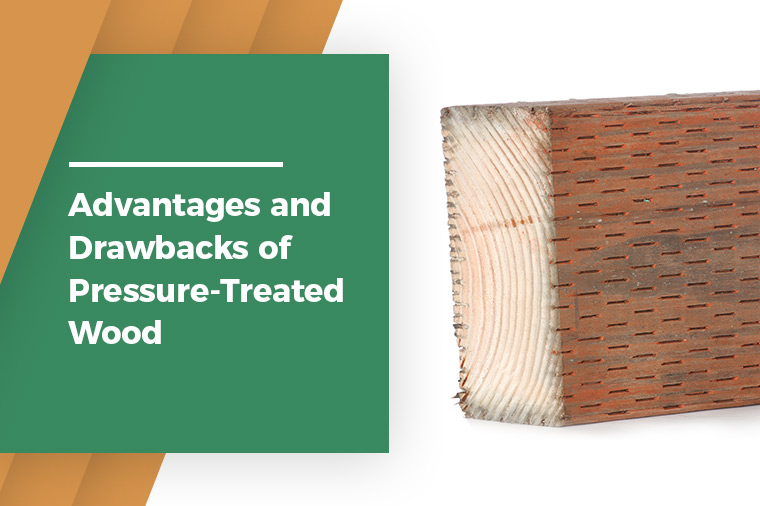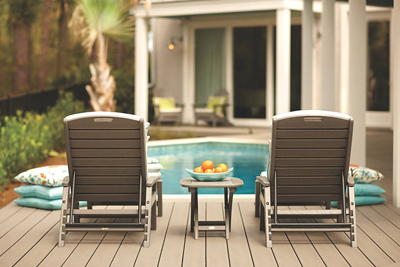Advantages and Drawbacks of Pressure-Treated Wood

To All Our Valued Customers, Over the past few years, the Covid 19 Pandemic has forced us to adapt and change the way we do things on a day-to-day basis. Florida Lumber is no exception. To make sure that we remain strong and competitive in the market for the years to come, Florida Lumber has had to adjust and change our vision for the future. In the last 2 years, we have stopped selling Sheetrock and drywall products, roofing felt and roofing materials, and have even closed on Saturdays.
Over the last few months, we have been transitioning our way out of the door supply business so on August 31, 2022, our door shop will stop assembling doors. We will continue liquidating our doors from inventory until we are out of material.
Some customers have asked if we are closing or even moving locations. To set the story straight, we are not closing or selling the business and we are not moving. These changes are all part of our new vision and path to continue serving South Florida and increasing our footprint in the construction supply industry.
Our focus is going to be on Lumber, Construction Materials, Rebar Fabrication and Rebar Accessories. As we have liquidated some of the items that we don’t sell anymore we have created more space to buy a larger volume of our core items and pass on the savings to our customers.
In the next year you will start seeing changes that will help improve our ability to serve you, our customers. We appreciate your business and your patience as Florida Lumber’s new vision becomes reality.
A Todos Nuestros Valiosos Clientes En los ultimos anos, la pandemia de el Virus (Covid 19) nos ha forzado a adaptarnos y cambiar la forma de hacer cosas en el dia a dia. Florida Lumber no ha sido una excepcion.
Para asegurarnos de mantenernos fuertes y competitivos en el mercado en los anos venideros, Florida Lumber ha tenido que ajustar y cambiar nuestra vision para el futuro. En los dos ultimos anos hemos dejado de vender los productos de yeso (sheetrock), paneles de yeso (drywall), tela asfaltica (roofing felt), materiales de techo y cerramos los Sabados. En los ultimos meses, hemos estado en transicion para salir del negocio de suministro de puertas, en Agosto 31, del 2022 nuestra tienda de puertas dejara de construir y/o cortar puertas. Vamos a continuar liquidando nuestro inventario de puertas haste que terminemos todo el material. Algunos de nuestros clientes han preguntado si estamos cerrando o si nos estamos moviendo a otra localidad. La verdad es que no estamos cerrando, no estamos vendiendo y no estamos cambiando de localidad. Estos cambios son todos parte de nuestra nueva vision y camino a continuar sirviendo al estado sur de la Florida y incrementar nuestras huellas en la industria de suministros de construccion.
paneles de yeso (drywall), tela asfaltica (roofing felt), materiales de techo y cerramos los Sabados.
En los ultimos meses, hemos estado en transicion para salir del negocio de suministro de puertas, en Agosto 31, del 2022 nuestra tienda de puertas dejara de construir y/o cortar puertas.
Vamos a continuar liquidando nuestro inventario de puertas haste que terminemos todo el material. Algunos de nuestros clientes han preguntado si estamos cerrando o si nos estamos moviendo a otra localidad.
La verdad es que no estamos cerrando, no estamos vendiendo y no estamos cambiando de localidad. Estos cambios son todos parte de nuestra nueva vision y camino a continuar sirviendo al estado sur de la Florida y incrementar nuestras huellas en la industria de suministros de construcción.
2431 N.W. 20TH ST.
MIAMI, FL 33142
PHONE: (305) 635-6412
Sales Fax: (305) 633-4054
Accounting Fax: (305) 635-3723
Email: sales@tloridalumber.com

Pressure-treated wood differs from the untreated variety due to the fact that it’s treated by a special process that imparts characteristics such as resistance to the elements, damage, and moisture. Its common use is in the construction of decks, poles, boardwalks and playgrounds. The treatment process involves the use of vacuum and pressure technology to force chemical preservatives within standard timber such as pine, fir or spruce. It infuses sturdy features that renders building material less susceptible from insects, fungal decay, and rot. This makes it ideal for construction projects.
Advantages of Pressure-Treated Wood:
- Affordability: This is cheaper than any other variety. For example, compared to redwood or cedar, users can save 30-40% on overall costs. In large-scale building projects, this ensures significant savings when working on a tight budget.
- Strength: This type of wood is strong, capable of withstanding significant wear and tear. It is also resistant to scratches and dents. It will appear beautiful post-installation and is ideal for long-term uses.
- Durability: Due to its extra strength, this type of wood remains damage-free for extended periods, and as such, does not require frequent replacement. It provides worry-free use, especially since many manufacturers offer a 40-year warranty on this type of wood.
- Insect-resistant: Because it contains toxins, pressure-treated wood repels insects. This means that you do not have to worry about termites and other wood-boring or wood-damaging insects after installation.
- Versatility: This type of wood is ideal for painting and staining with any desired color. Thus, people looking to match wood colors with existing home features like interior hardwood would find this to be a beautiful option. However, staining or painting should be done only on completely dry wood.
- Repair ease: Even when problems like drilling accidents or damage due to the activities of children occur, the repair for pressure-treated wood is quite easy and inexpensive. This means one less worry for homeowners.
- Natural: This is an eco-friendly choice. Manufacturers use varieties like the pinewood for treatment due to its fast-growing properties.
Drawbacks of Pressure-Treated Wood:
- Checking and splinters: Just like every other variety, occasional inspection of pressure-treated wood is advisable. This way, even if splitting or drying is present due to alternate drying and wetting cycles you will be able to identify the problem immediately and consider a timely repair. According to experts, after outdoor exposure of 6-12 months, checking is necessary. This way, you will be able to maximize the benefits associated with pressure-treated wood into the future.
- Maintenance work: In order to protect the wood from fading, checking, splintering, or turning soft and porous, you have to stain it and apply penetrating sealers annually. If you do not take proper care, the wood retains blemishes and stains from falling debris and leaves.
- Chemical risks: Due to chemical treatment being necessary for the protection of pressure-treated wood, a certain amount of care must be utilized. When you cut, trim, or burn wood, it leads to a certain amount of toxins being released into the air. Also, manufacturers caution against its use in gardens because of increased chance that it will come into contact with water and food.
Pressure-treated wood has lots of benefits and requires little care and maintenance. It will last for multiple decades. When working with pressure-treated wood, wear masks, gloves and safety goggles in well-ventilated areas. It is possible to recycle pressure-treated wood and it requires expert handling in order to get the best possible results.

